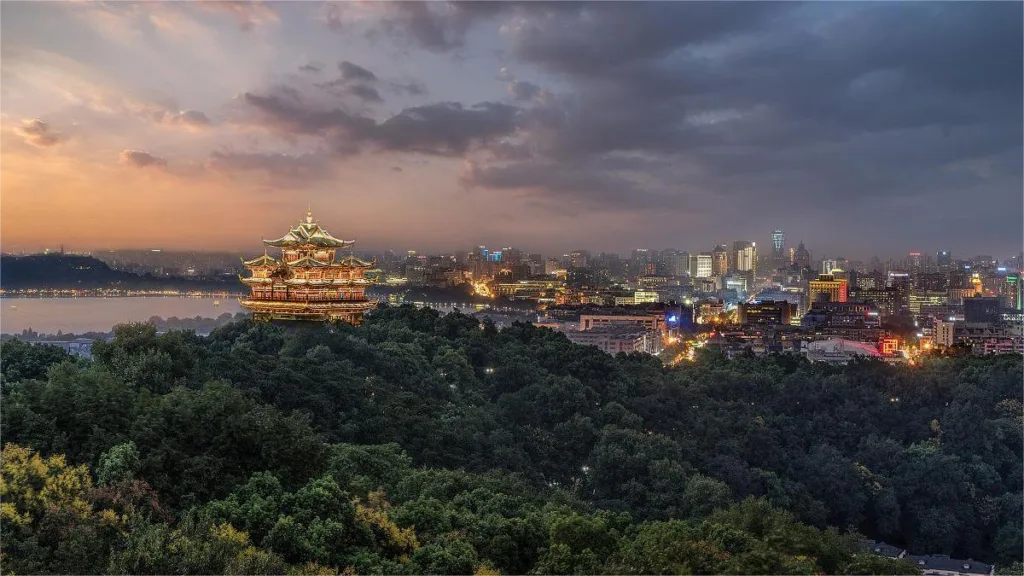The Drum Tower in Hangzhou (杭州鼓楼), situated to the east of Wushan Mountain in Zhejiang Province, China, holds a significant place in the city’s history and culture. Located at the southern end of Shiwukui Lane, bordering Dajing Lane to the north, Zhonghe Road to the east, and Wugong Mountain to the west, this historical landmark dates back to the Southern Dynasties period during the Five Dynasties and Ten Kingdoms era. Originally constructed as a coastal defense tower, it underwent several reconstructions and renovations over the centuries.
In 1561, during the Ming Dynasty, the Drum Tower was rebuilt following its destruction in previous conflicts. However, during the chaos of the ten-year turmoil, it suffered further damage and was partially dismantled. Recognizing its cultural and historical significance, Hangzhou municipal authorities initiated a reconstruction project as part of the city’s efforts to preserve its cultural heritage and promote tourism.
Table of Contents
- Basic Information
- Location and Transportation
- Highlights of Hangzhou Drum Tower
- Attractions near the Drum Tower
Basic Information
| Estimated Length of Tour | 0.5 – 1 hours |
| Ticket Price | Free |
| Opening Hours | 9.00 – 21.00 |
| Performance | 16.00 – 16.30 |
| Telephone Number | 0086-0571-86927218 |
Location and Transportation
The Drum Tower is located at 501 Zhongshan South Road, Shangcheng District, Hangzhou City, Zhejiang Province. It is a part of the Qinghefang Scenic Area. To get there, you can choose one of the following ways:
Bus: Take bus 8, 13, 39, 66, 71, 84, 195, 198, 283, 287, 308, 315, 352, 7280, 7295, 8230, 8514, or WE1314 and get off at Gulou Stop (鼓楼站).
Metro: The closest metro station to the Drum Tower is Jiangcheng Road (江城路站) on line 5 and line 7. After getting out of the station from Exit E, walk about 350 meters to the southwest to reach the attraction.
Highlights of Hangzhou Drum Tower
Ming-Dynasty-Style Architecture

The reconstruction project, completed in 2001, aimed to recreate the Drum Tower’s architectural grandeur based on Ming Dynasty design principles. The new structure occupies an area of 865 square meters, with a total floor area of 1046 square meters and a height of 19.47 meters. It features a traditional two-tiered, five-bay design with a hipped roof, adorned with decorative wooden brackets and carvings reminiscent of classical Ming-style architecture. The Drum Tower harmonizes with the nearby Chenghuang Pavilion on the western side of Wushan Mountain, adding to the city’s architectural charm.
Exhibition Hall

Upon entering the Drum Tower, visitors are greeted by an exhibition hall on the ground floor, showcasing artifacts discovered at the tower’s archaeological site, including ancient bricks and historical documents detailing its evolution. Above the exhibition hall, visitors can admire large-scale woodcarvings depicting famous scenes such as “Along the River During the Qingming Festival” and “Scenic View of the Drum Tower.”
Drums and Bell

Ascending to the second floor, visitors will find the main hall adorned with a set of nine drums and a large ceremonial bell. This setup recreates the ambiance of bygone eras when the beating of drums and ringing of bells served as timekeeping signals and ceremonial announcements. Among the drums, the largest one boasts a diameter of two meters, while the Peace Bell of the Century is prominently displayed on the observation deck, inviting visitors to strike the drums and ring the bell, adding an interactive element to their cultural experience.








